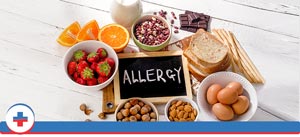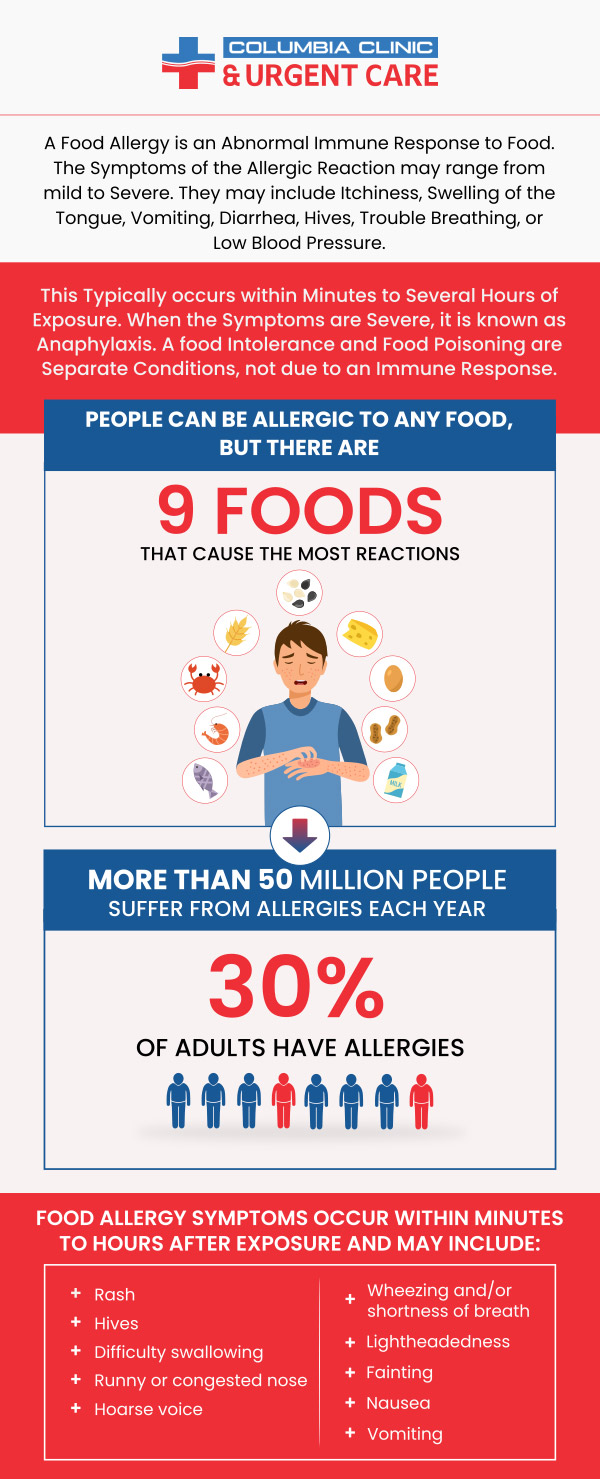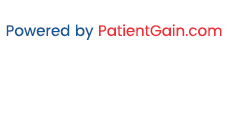Food Allergies Treatment Clinic Questions and Answers
Food allergies can be life-threatening, don’t take them casually. Visit Columbia Clinic Urgent Care and get comprehensive treatment for your food allergies. For more information, call us or book an appointment online. We have convenient locations to serve you at Tibbetts St Portland, Stark Street Portland and Tigard, OR.




Table of Contents:
What Are The Most Common Food Allergies?
What Are The Symptoms Of A Food Allergy?
What Happens If You Keep Eating Foods You’re Allergic To?
How Do You Treat Food Allergies?
Allergy or intolerance? Many people who think they are allergic to a food may actually have an intolerance to it, and while both conditions have some common symptoms, the body’s response is what differentiates them. With a food allergy the response is caused by the immune system, with a food intolerance it’s caused by the digestive system. Although having a significant impact on one’s quality of life, food intolerances are not life-threatening, and it is therefore important to know the difference between the two.
Food allergies are very common and are becoming more so. Current numbers of those affected are estimated to be in the region of 5% of adults and 8% of children. Although it is possible for any food to cause an allergic reaction, most food allergies are caused by just eight foods:
Cow’s milk – mostly affects children under 3 years of age and necessitates the avoidance of all milk and milk products such as milk powder, cheese, butter, margarine, yogurt, cream and ice cream. It is one of the most common childhood allergies but most children will grow out of the condition by the time they are three.
Eggs – egg white allergy is the most common form of allergy to eggs but it is possible to be allergic to the yolks and not the whites, and vice versa as they have slightly different proteins. Avoidance of eggs and egg products is the most effective treatment.
Fish – often develops later in life. Fish and shellfish have different proteins so a person allergic to fish may not be allergic to shellfish, and vice versa. Fish allergies are common but can get confused with an adverse reaction to eating contaminated fish.
Peanuts – a very common food allergy that can cause severe, life-threatening or fatal reactions. The only effective form of treatment is the avoidance of peanuts and products that contain them, although new treatments are being developed for children by giving them precise amounts of peanuts under close medical supervision to try and de-sensitize them.
Shellfish – not to be confused with a fish allergy although, as with fish allergies, they can sometimes be confused with the effects of eating contaminated products. Vapors from cooking shellfish can also trigger a reaction in someone who has a shellfish allergy, so they should stay away from shellfish when they are being cooked. Examples of shellfish are shrimp, crayfish, lobster, squid and scallops.
Soy – this allergy is most commonly seen in infants and children under three. Common food triggers are soybeans, soymilk and soy sauce. Soy is found in many foods, so it is important to always read food labels.
Tree nuts – another very common food allergy – not to be confused with a peanut allergy – thought to affect around 1% of the US population. It very often results in severe allergic reactions and treatment is usually a lifelong avoidance of all tree nuts and associated products. Some examples of tree nuts are brazil nuts, almonds, cashews, macadamia nuts, pistachios, pine nuts and walnuts.
Wheat – a wheat allergy causes a response when exposed to one of the hundreds of proteins that are found in wheat. The reaction can be severe, sometimes even fatal. It is often confused with celiac disease which has similar symptoms but is not life-threatening.
Symptoms of food allergies can range from mild to severe to life-threatening and can appear minutes, or even hours, after exposure to the problem food. They include:
– Swelling of tongue, mouth or face
– Difficulty breathing
– Low blood pressure
– Vomiting
– Diarrhea
– Hives
– Itchy rash
In more severe cases, a food allergy can cause anaphylaxis, symptoms of which can come on very quickly and, in some cases, can prove fatal. These include an itchy rash, swelling of the throat or tongue, shortness of breath and low blood pressure.
Food allergies elicit strong, negative immune responses and cause many adverse physical reactions. If someone continues to eat the food(s) to which they know they are allergic, they are subjecting their body to unnecessary stress and run the risk that a hitherto relatively mild reaction could turn into something much more serious, even life-threatening. Someone who has been diagnosed with a food allergy should strictly avoid that food and all associated food products.
Once diagnosed with a food allergy you can take certain steps to manage your condition, the most important of which is to avoid the food proteins to which you are allergic. There is currently no cure for food allergies, and there are no medicines that prevent allergic reactions, so taking preventive steps is important. As well as avoidance, make sure you read food labels and always ask about ingredients when eating out at restaurants or eating food prepared by family or friends.
If you have a severe food allergy and are susceptible to anaphylaxis, be sure to carry your auto-injectable epinephrine with you at all times; antihistamines may help relieve milder symptoms.
If you have any questions or concerns regarding food allergies contact Columbia Clinic Urgent Care today! We serve patients from Portland OR, PDX, Tigard OR, Milwaukie OR, Cedar Hills OR, Cedar Mill OR, Lake Oswego OR, Oak Grove OR, Vancouver WA, Aloha OR, Minnehaha WA, Gladstone OR, Tualatin OR, West Linn OR, Fairview OR, Oregon City OR.


